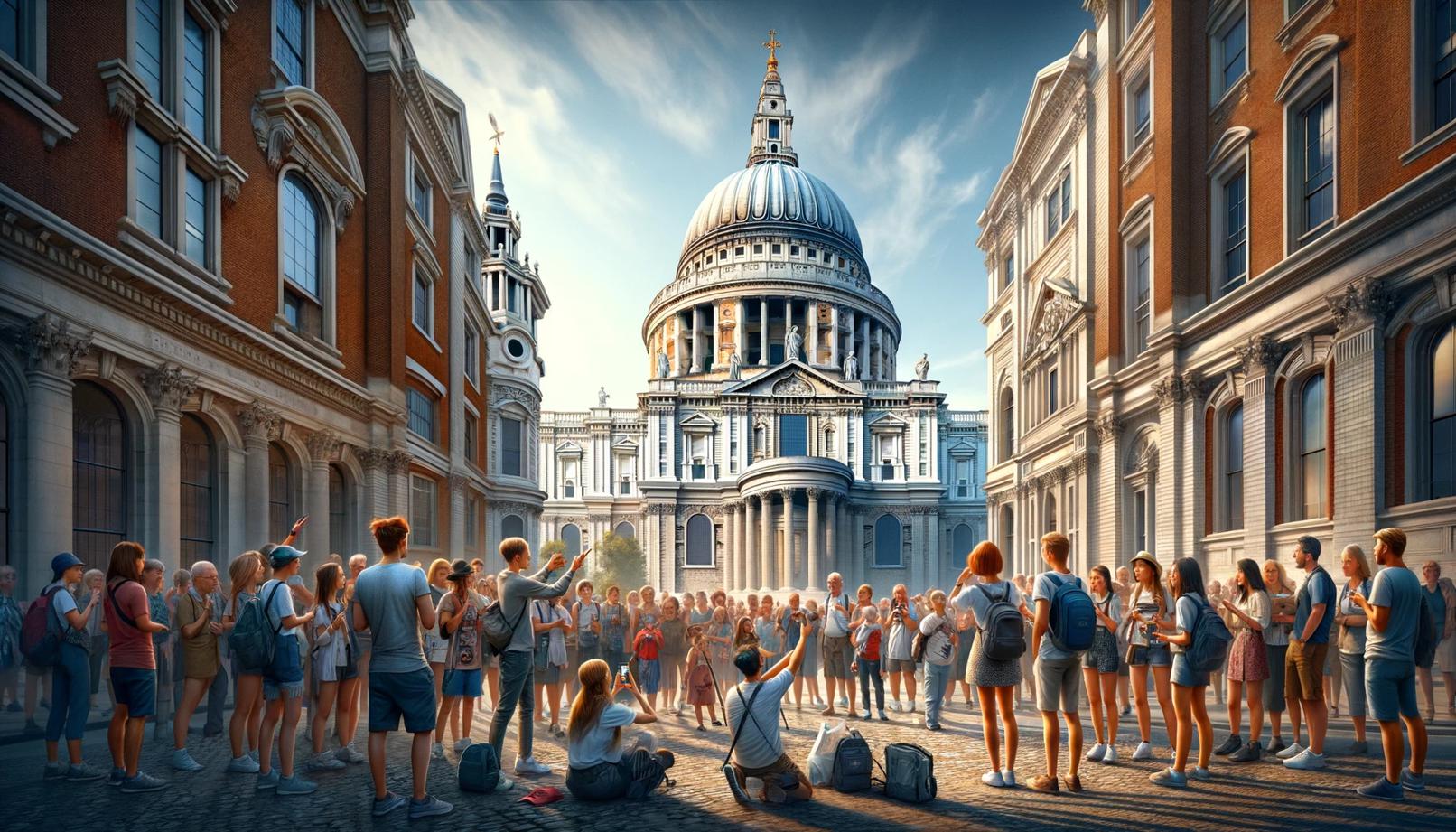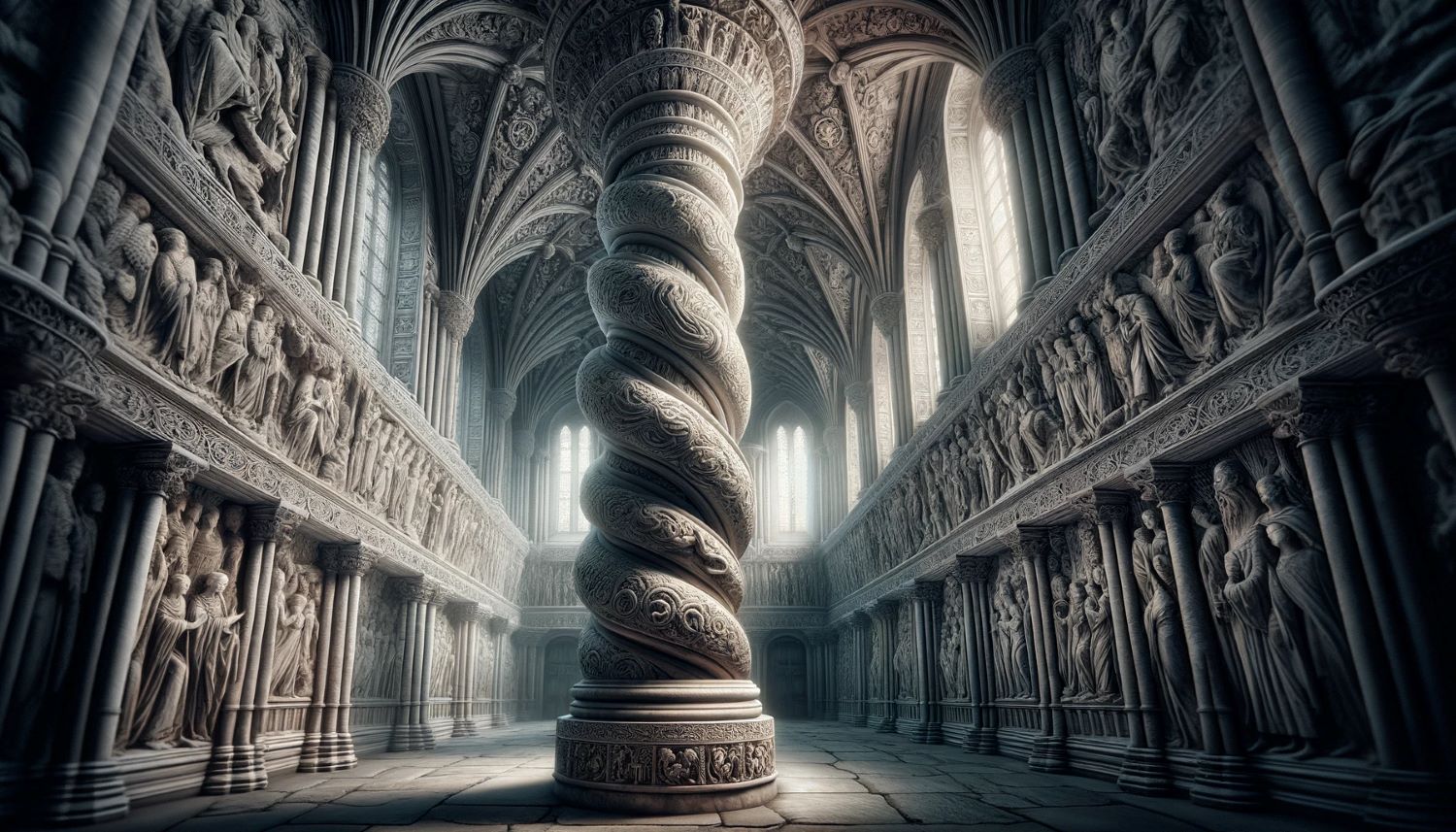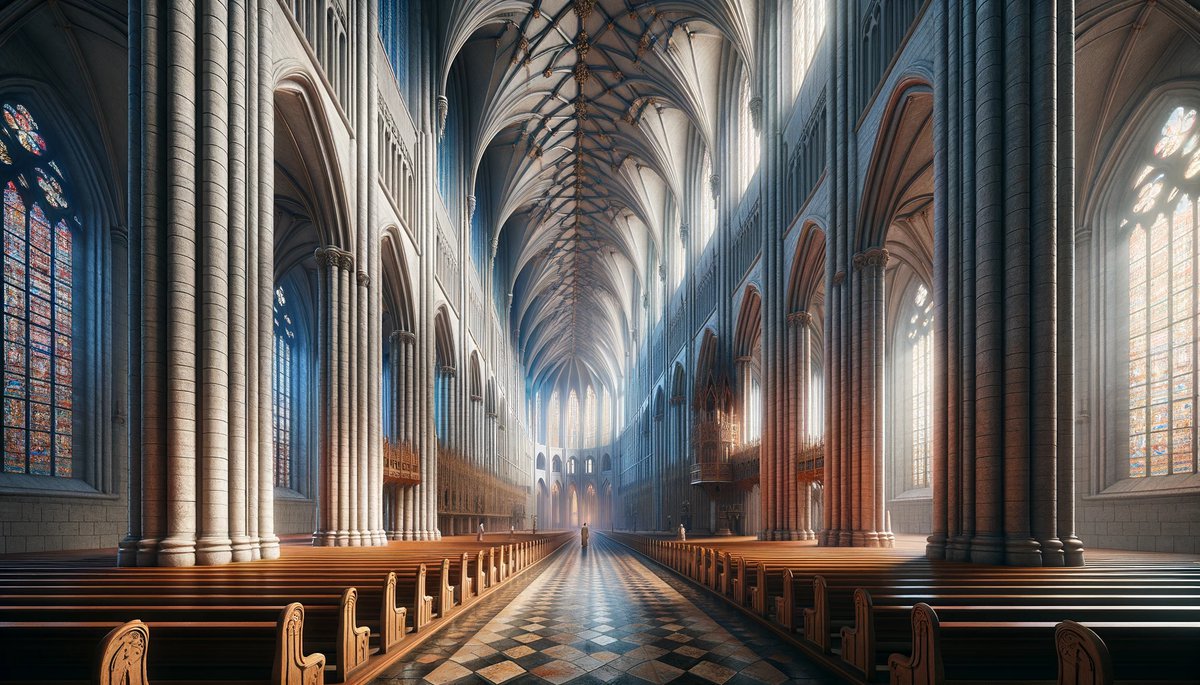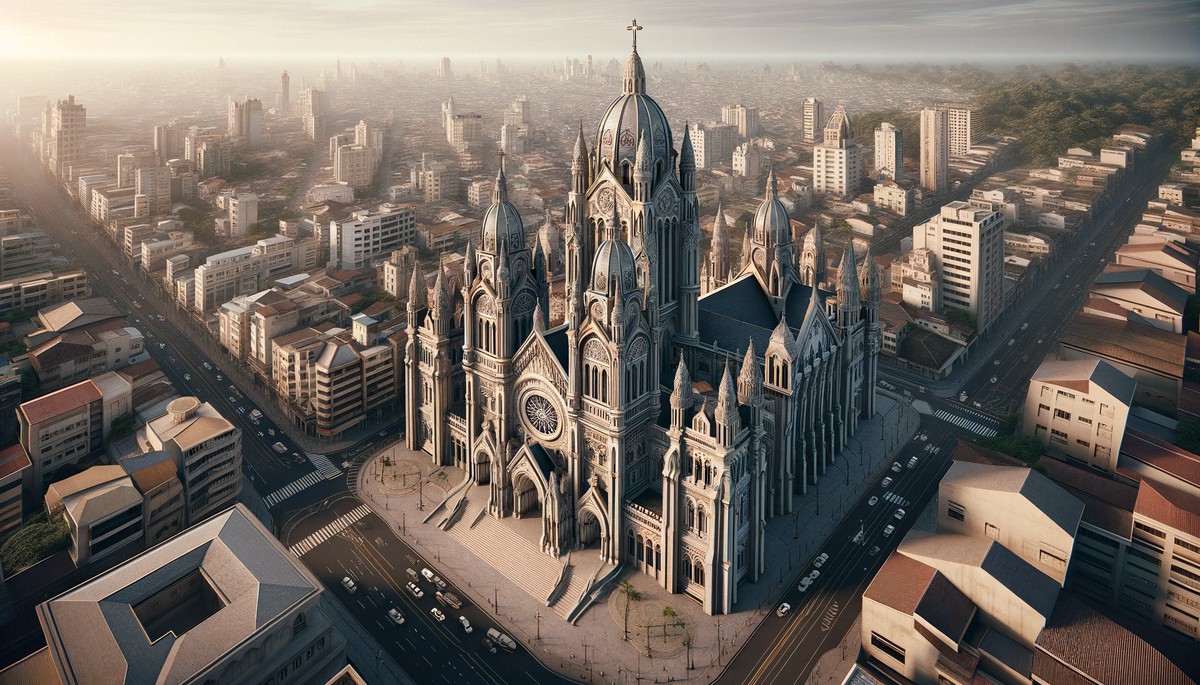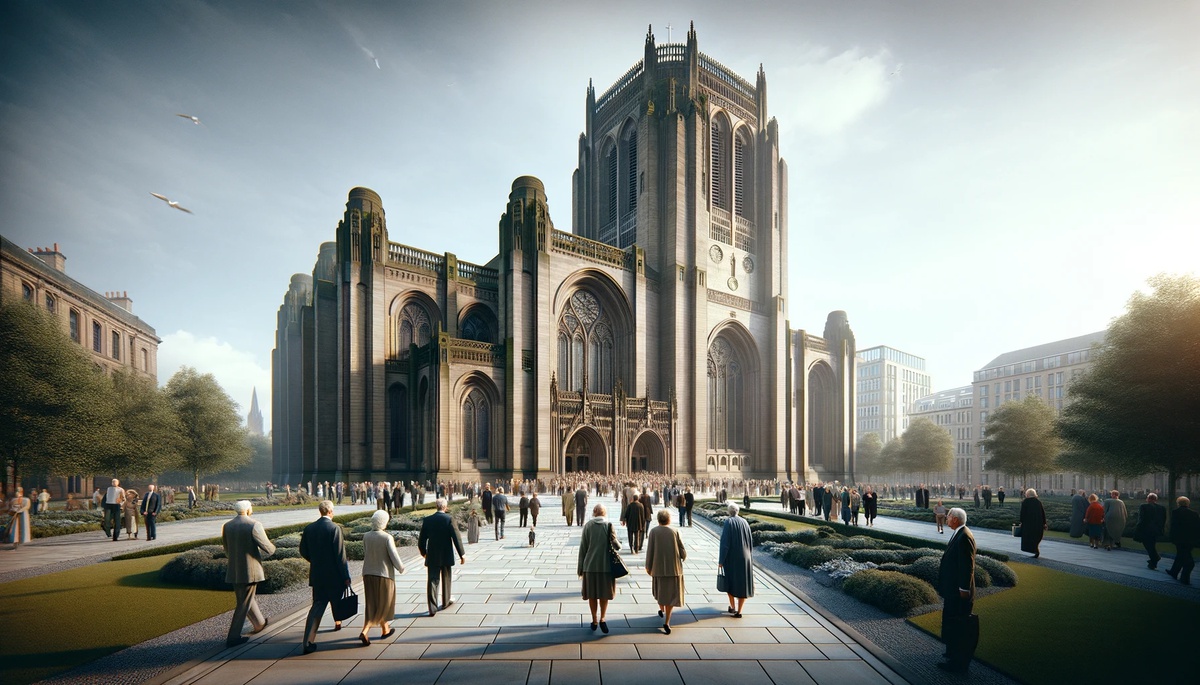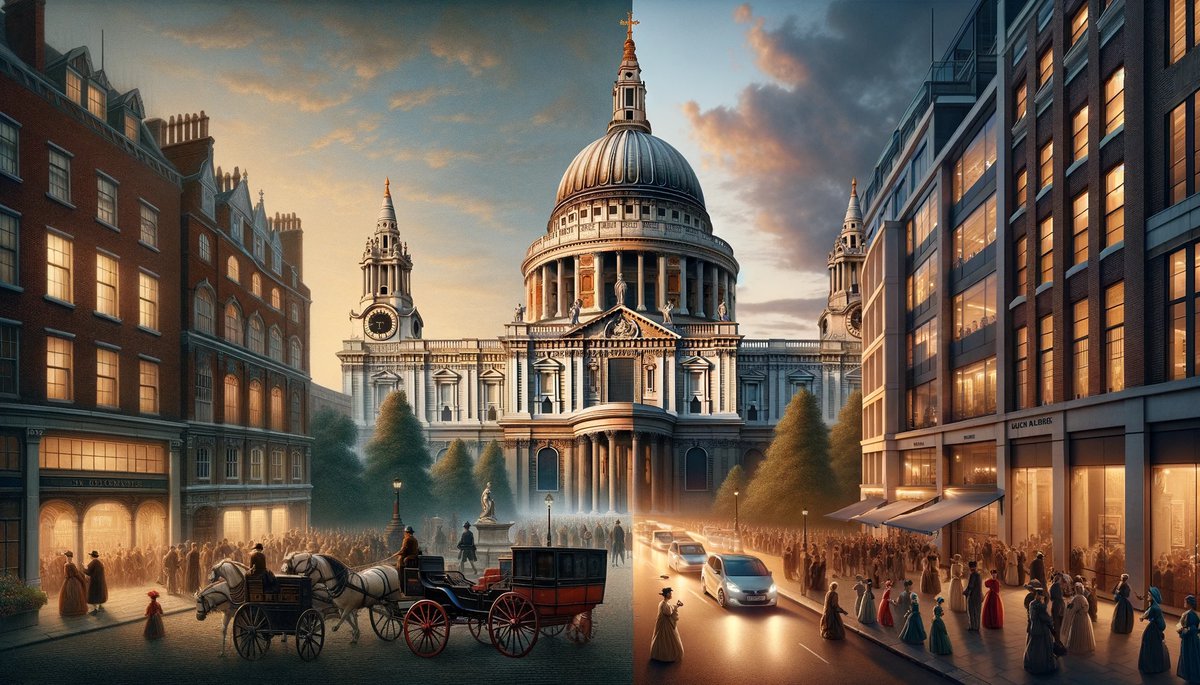Home>Arts and Culture>What Is Gloucester Cathedral Famous For
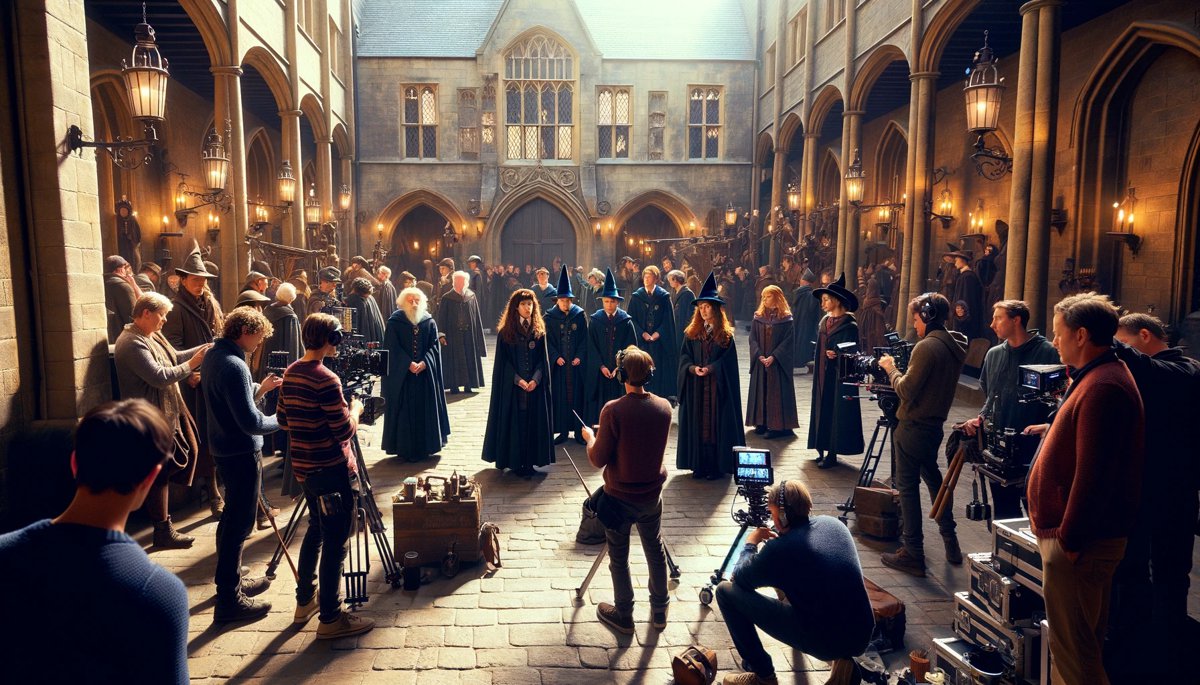

Arts and Culture
What Is Gloucester Cathedral Famous For
Published: February 18, 2024
Ericka Andersen, an editor at Christian.net, expertly merges digital strategy with content creation, focusing on faith and societal issues. Her communication skills enhance the platform's engaging narratives, fostering meaningful dialogue on belief's impact on society.
Discover the rich history and stunning architecture of Gloucester Cathedral, a renowned masterpiece of arts and culture. Explore its famous medieval cloisters and intricate stained glass windows.
(Many of the links in this article redirect to a specific reviewed product. Your purchase of these products through affiliate links helps to generate commission for Christian.net, at no extra cost. Learn more)
Table of Contents
History of Gloucester Cathedral
Gloucester Cathedral, formally known as the Cathedral Church of St Peter and the Holy and Indivisible Trinity, boasts a rich and storied history that spans over a millennium. Its origins can be traced back to the late 7th century when the Saxon King Osric founded a religious house on the site. However, it was not until the arrival of the Normans in the 11th century that the cathedral as we know it today began to take shape.
The Normans, renowned for their architectural prowess, embarked on an ambitious project to construct a grand cathedral in the Romanesque style. The foundations were laid, and the construction commenced in the year 1089 under the supervision of Abbot Serlo. The cathedral's architectural significance lies in its status as one of the earliest examples of Norman architecture in England, characterized by its sturdy pillars, rounded arches, and imposing presence.
Over the centuries, Gloucester Cathedral underwent several transformations and expansions, each contributing to its unique blend of architectural styles. The 14th and 15th centuries witnessed the addition of exquisite Gothic elements, including the stunning fan-vaulted cloisters, which remain a testament to the skill and artistry of the medieval craftsmen.
The cathedral also bears the scars of historical upheavals, notably the English Civil War, during which it suffered damage at the hands of Parliamentarian forces. However, the enduring resilience of Gloucester Cathedral prevailed, and it emerged from these turbulent times with its spiritual significance and architectural splendor intact.
In the annals of history, Gloucester Cathedral has played a pivotal role in the cultural and religious tapestry of England. Its hallowed halls have echoed with the chants of monks, witnessed royal ceremonies, and provided solace to countless pilgrims and worshippers. The cathedral stands not only as a testament to the faith of the community but also as a living chronicle of the nation's heritage and spiritual evolution.
Today, visitors from around the world flock to Gloucester Cathedral to marvel at its architectural grandeur, immerse themselves in its compelling history, and experience the palpable sense of reverence that permeates its sacred precincts. As the sun sets over the cathedral's ancient spires, it casts a timeless glow upon the enduring legacy of this architectural masterpiece, inviting all who behold it to become part of its ongoing narrative.
Read more: What Is The Most Famous Cathedral In France
Architecture and Design
The architectural splendor of Gloucester Cathedral is a testament to the ingenuity and craftsmanship of the medieval builders who brought this magnificent structure to life. As one stands in awe of its soaring spires and intricate stonework, it becomes evident that every facet of the cathedral's design was meticulously planned to inspire a sense of wonder and reverence.
The cathedral's exterior is a captivating display of Norman and Gothic architectural styles, each contributing to its timeless allure. The sturdy pillars and rounded arches, characteristic of Norman design, exude a sense of strength and solidity, while the delicate tracery and soaring vaults of the Gothic elements impart an ethereal beauty to the structure. The intricate carvings adorning the façade serve as a visual chronicle of religious narratives and historical events, inviting visitors to delve into the rich tapestry of the cathedral's past.
Stepping into the hallowed interior, one is greeted by the grandeur of the nave, flanked by graceful columns that reach skyward to support the weight of history and faith. The soaring vaults, adorned with delicate ribbed patterns, draw the eye heavenward, evoking a profound sense of transcendence. The play of light filtering through the stained glass windows creates an ever-shifting kaleidoscope of colors, infusing the sacred space with an otherworldly ambiance.
The crowning jewel of Gloucester Cathedral is undoubtedly its exquisite cloisters, hailed as some of the most beautiful in England. The fan-vaulted ceilings, adorned with intricate tracery, create a mesmerizing effect, as if the very stone has been transformed into lace. The cloisters, with their serene courtyards and elegant archways, offer a tranquil retreat from the outside world, inviting contemplation and introspection.
Every aspect of Gloucester Cathedral's architecture and design, from the imposing façade to the delicate tracery, serves as a testament to the unwavering devotion and artistic vision of those who contributed to its creation. It stands as a living testament to the enduring power of human creativity and spiritual aspiration, beckoning visitors to immerse themselves in its timeless beauty and profound significance.
Famous Tombs and Monuments
Within the hallowed walls of Gloucester Cathedral lie an array of famous tombs and monuments, each bearing witness to the lives and legacies of notable figures from England's history. These revered sites serve as poignant reminders of the enduring impact of those who have left their indelible mark on the annals of time.
One of the most prominent tombs within the cathedral is that of King Edward II, whose tumultuous reign and tragic fate have captured the imagination of historians and storytellers alike. The elaborate tomb, adorned with intricate carvings and regal effigies, stands as a testament to the complex legacy of this enigmatic monarch. Nearby, the tomb of Robert Curthose, the eldest son of William the Conqueror, commands attention with its imposing presence, offering a glimpse into the lineage of England's ruling dynasty.
The Lady Chapel, a place of ethereal beauty and serenity, houses the exquisite tomb of King Edward II's grandfather, King Edward I, known for his formidable military campaigns and unwavering determination. The effigy of the king, resplendent in regal attire, serves as a poignant tribute to his indelible impact on the course of English history.
In addition to royal tombs, Gloucester Cathedral is also home to the final resting place of notable ecclesiastical figures, including the revered Bishop Hooper, whose steadfast commitment to his beliefs led to his martyrdom during the tumultuous reign of Queen Mary I. The monument dedicated to Bishop Hooper stands as a testament to his unwavering faith and enduring legacy, inspiring visitors to reflect on the profound sacrifices made in the name of religious conviction.
The cathedral's cloisters, with their tranquil ambience and timeless beauty, provide a fitting setting for the poignant monuments and tombs that grace their hallowed precincts. Here, visitors can pay homage to the memory of Robert, Duke of Normandy, whose effigy serves as a poignant reminder of the intricate tapestry of familial bonds and historical destinies that have shaped the course of England's narrative.
As visitors wander through the sacred spaces of Gloucester Cathedral, they are afforded the opportunity to connect with the enduring legacies of those who have shaped the course of English history. The famous tombs and monuments, with their intricate carvings and solemn grandeur, offer a profound glimpse into the lives and legacies of the individuals interred within the cathedral's ancient walls, inviting contemplation and reverence.
Harry Potter Filming Location
Gloucester Cathedral holds a place of distinction in the realm of cinematic history, having served as a captivating backdrop for the magical world of Harry Potter. The cathedral's awe-inspiring architecture and atmospheric ambiance provided the perfect setting for several iconic scenes in the film adaptations of J.K. Rowling's beloved literary saga.
One of the most notable features of Gloucester Cathedral that captured the imagination of filmmakers and audiences alike is its magnificent cloisters. These exquisite cloisters, with their soaring fan-vaulted ceilings and intricate tracery, exude an ethereal beauty that seamlessly transported viewers into the enchanted realm of Hogwarts School of Witchcraft and Wizardry. The cloisters served as the hallowed corridors of Hogwarts, where students congregated and embarked on their mystical adventures.
The spellbinding allure of the cathedral's cloisters is further enhanced by the play of light and shadow, creating a mesmerizing interplay of textures and hues that lent an air of mystery and enchantment to the cinematic portrayal of Hogwarts. As Harry Potter and his fellow students traversed the cloisters in pursuit of knowledge and adventure, audiences were transported into a world where magic and wonder intersected with the grandeur of medieval architecture.
In addition to the cloisters, Gloucester Cathedral's majestic nave and towering pillars provided a dramatic backdrop for pivotal scenes in the Harry Potter films. The cathedral's soaring interior, with its timeless aura of reverence and grandeur, served as the perfect setting for moments of introspection and revelation within the narrative of the wizarding world.
The cathedral's seamless integration into the cinematic tapestry of Harry Potter stands as a testament to its enduring allure and universal appeal. Through its on-screen portrayal as a bastion of magical learning and discovery, Gloucester Cathedral has captured the hearts of audiences around the world, inviting them to embark on a journey that transcends the boundaries of reality and imagination.
As visitors explore the hallowed halls of Gloucester Cathedral, they are afforded the opportunity to retrace the footsteps of beloved characters and immerse themselves in the spellbinding ambiance that left an indelible mark on the cinematic landscape. The cathedral's role as a Harry Potter filming location serves as a testament to its timeless charm and the seamless fusion of history, art, and storytelling, inviting visitors to become part of a narrative that transcends the confines of time and space.
Musical and Cultural Events
The hallowed halls of Gloucester Cathedral resonate not only with the echoes of history and devotion but also with the harmonious strains of musical and cultural events that enrich the spiritual and artistic tapestry of this venerable institution. Throughout the year, the cathedral serves as a captivating venue for a diverse array of performances, concerts, and cultural celebrations, drawing visitors from near and far to partake in the transcendent power of music and the arts within its sacred precincts.
One of the most anticipated events on the cathedral's calendar is the Gloucester Music Festival, a celebration of classical music that showcases the talents of renowned musicians and ensembles from across the globe. The festival's program encompasses a rich tapestry of orchestral performances, choral recitals, and chamber music concerts, offering audiences an opportunity to immerse themselves in the timeless beauty of masterful compositions within the cathedral's acoustically rich nave. The ethereal ambiance of the cathedral, with its soaring vaults and resplendent stained glass windows, provides a fitting backdrop for the transcendent performances that unfold during the festival, creating an immersive experience that resonates with the soul.
In addition to classical music, Gloucester Cathedral also plays host to a diverse range of cultural events that celebrate the vibrant heritage of the region and the enduring legacy of artistic expression. From traditional folk music gatherings to contemporary dance performances, the cathedral's sacred spaces provide a captivating setting for artists to weave their creative narratives and share their talents with a captivated audience. The fusion of art, music, and culture within the cathedral's timeless embrace serves to foster a sense of community and connection, inviting individuals from all walks of life to come together in celebration of the human spirit.
Furthermore, the cathedral's renowned choir, comprised of talented choristers and musicians, enriches the spiritual life of the institution through its evocative choral performances and sacred music recitals. The resonant harmonies that emanate from the choir loft during evensong services and special concerts infuse the sacred spaces with an aura of transcendence, inviting worshippers and music enthusiasts alike to partake in a profound journey of sonic and spiritual elevation.
As visitors partake in the musical and cultural events hosted within the cathedral's hallowed confines, they are afforded the opportunity to witness the seamless fusion of artistic expression and spiritual reverence, transcending the boundaries of time and tradition. The cathedral's role as a vibrant cultural hub stands as a testament to its enduring legacy as a beacon of inspiration and creativity, inviting all who enter to become part of a narrative that celebrates the transformative power of music and the arts.
Read more: Why Is St. Patrick’s Cathedral Famous
Religious Significance
The religious significance of Gloucester Cathedral transcends its historical and architectural grandeur, encompassing a profound spiritual legacy that has endured for centuries. As a sacred sanctuary steeped in the traditions of the Christian faith, the cathedral stands as a beacon of spiritual devotion and communal worship, inviting pilgrims, worshippers, and seekers of solace to partake in a transcendent journey of faith and contemplation.
At the heart of Gloucester Cathedral's religious significance lies its role as a place of divine encounter and spiritual reflection. The sacred spaces within the cathedral, from the resplendent nave to the serene Lady Chapel, provide a sanctuary for individuals to seek solace, offer prayers, and partake in the timeless rituals of Christian worship. The ethereal beauty of the cathedral's architecture, infused with the soft glow of stained glass and the reverent hush of sacred silence, creates an atmosphere conducive to introspection and communion with the divine.
The cathedral's enduring commitment to the Anglican tradition is exemplified through its rich tapestry of liturgical services, including evensong, Eucharistic celebrations, and special religious observances that mark the rhythm of the Christian calendar. These sacred rituals, accompanied by the resonant harmonies of the cathedral choir and the timeless cadence of sacred scripture, serve to elevate the spiritual experience of worshippers, fostering a sense of connection to the divine and the broader community of faith.
Furthermore, Gloucester Cathedral stands as a custodian of religious heritage, preserving the sacred relics, artifacts, and traditions that have shaped the spiritual identity of the region. The cathedral's chapels and shrines, adorned with exquisite carvings and religious iconography, serve as tangible expressions of devotion and veneration, inviting visitors to engage with the enduring symbols of Christian faith and the lives of the saints and martyrs who have left an indelible mark on the cathedral's narrative.
As visitors traverse the hallowed precincts of Gloucester Cathedral, they are enveloped in a sense of reverence and awe, drawn into a sacred narrative that transcends the boundaries of time and space. The cathedral's religious significance extends beyond its role as a historical monument, resonating with the eternal echoes of faith, devotion, and the enduring quest for spiritual transcendence.
In essence, Gloucester Cathedral stands as a testament to the enduring power of religious significance, inviting all who enter its sacred embrace to partake in a journey of spiritual enrichment and divine communion.
